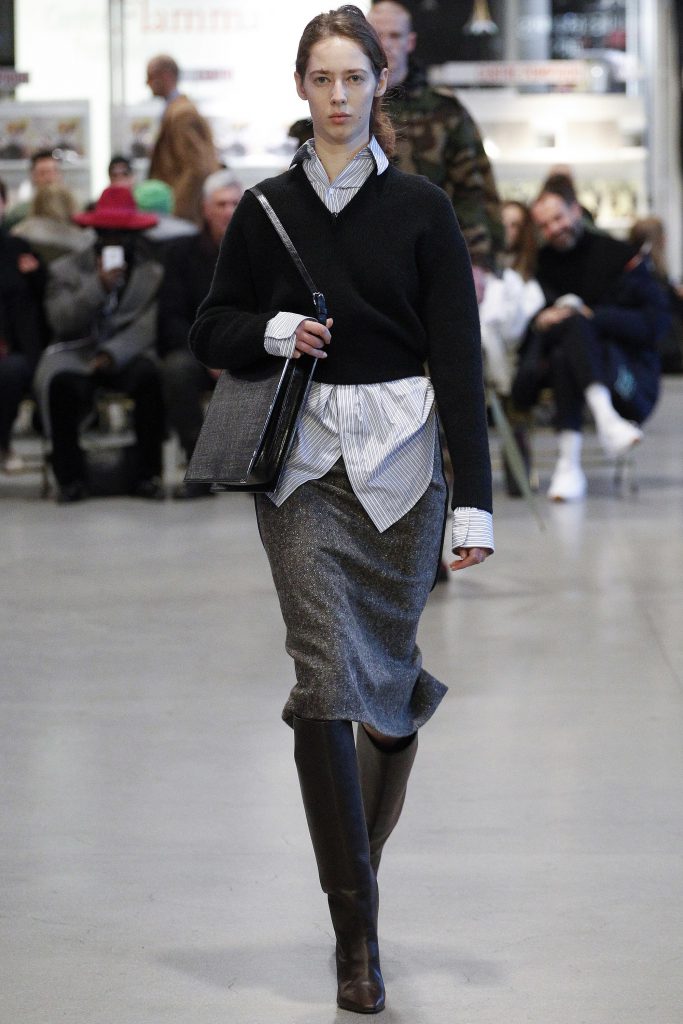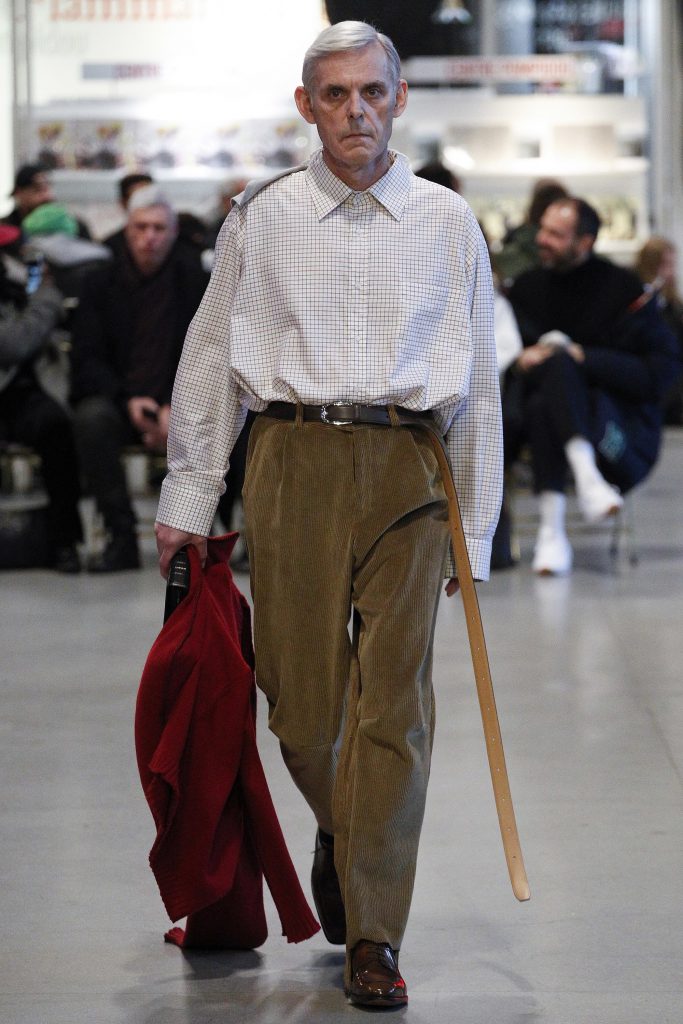Vetements, Fall 2017 Menswear, Paris
If anyone had Demna Gvasalia down as purely a streetwear revolutionary who shot from nowhere to lead a youth cult, then they’d have been taken aback by the sight of the silver-haired madame in dark glasses, fur coat, and a pencil skirt who stepped off the escalator at the Centre Pompidou to open the Fall 2017 Vetements show. “She’s the Milanesa!” Gvasalia chuckled, while he was marshaling his set of characters—a broad-ranging and subversively selected cross section of people-types—upstairs at the museum. “I got tired of just doing hoodies and underground clubs; we’ve done that at Vetements,” he said. “A new stage has to come. What we do here is always a reappropriation of something which already exists. So we took a survey of social uniforms, researched the dress codes of people we see around us, or on the Internet.”
Surprise is crucial in fashion, especially when there is so much pressure on a new designer in an era when constant praise, social media visibility, and global sales have accelerated him from zero to warp speed—fame! followers! hiring at Balenciaga!—in the space of little more than three years. The trouble, in these compacted, constantly connected times, is that backlash, the critics, and the trolls can set in really quickly with who knows what damage to reputation and sales. So, surprise, change Gvasalia did. Fall 2017 was a different kind of reality show, embracing all types of people, from that Milanese lady to a German tourist with a plastic anorak to a European policewoman, the stereotypical bouncer, a United Nations soldier, and a couple of shaven-headed skinheads who may belong to the Gabber club.
Is this creativity as we know it? Yes, on a technical level. The generous, oversize outerwear has been constructed from two garments joined together at the hems and looped up over one another. Hence, the glam Milanesa was actually sporting two fur coats, which, Gvasalia hastened to note, were vintage and upcycled pieces. That’s a one-off, limited-edition item by nature, but the double-layering of more generic garments, like nylon blousons, has genuine cold-weather usefulness about it.
What will keep people talking longer is the satirical symbolism—bleakly realistic, angry, and hilarious by turns—which came embedded within Vetements’s collection. When the Commando in his camouflage turned his back, he had a United Nations peacekeeping symbol printed on his back: “He’s a soldier, but he’s a good boy! It’s not his fault!” The Nerd, wearing a double-layered flannel shirt and Barbour jacket, had a T-shirt printed with a takeaway pizza menu. The down-and-out Vagabond, meanwhile, was sporting possibly the most topical garment of all: a falling-apart sweater printed with the flag of the European Union.
Does this collection, with its upgraded level of innovation, signal Vetements’s distancing itself from its roots? Not at all. The cult hoodies and T-shirts are being kept in a continuing, more secret category of their own—adding a value-protecting aura to them, and the possibility of distributing them in ways that defy the fashion system’s rules. Meanwhile, Gvasalia notes, pieces in this runway collection which prove commerically popular will be added to the permanently available range.
Moreover, there are bigger plans afoot for the company being laid out for the long term by Demna’s younger brother and CEO Guram Gvasalia. Vetements is reportedly about to move its headquarters and design offices to Zurich in Switzerland. Whatever surprises and sociological quips come from this direction next, these brothers mean to harness the growth their disruptive strategies have generated, and create something the industry is likely to take very seriously indeed.
Text: Sarah Mower, http://www.vogue.com/fashion-shows/fall-2017-menswear/vetements.
All images belongs to the respective artist and management.

